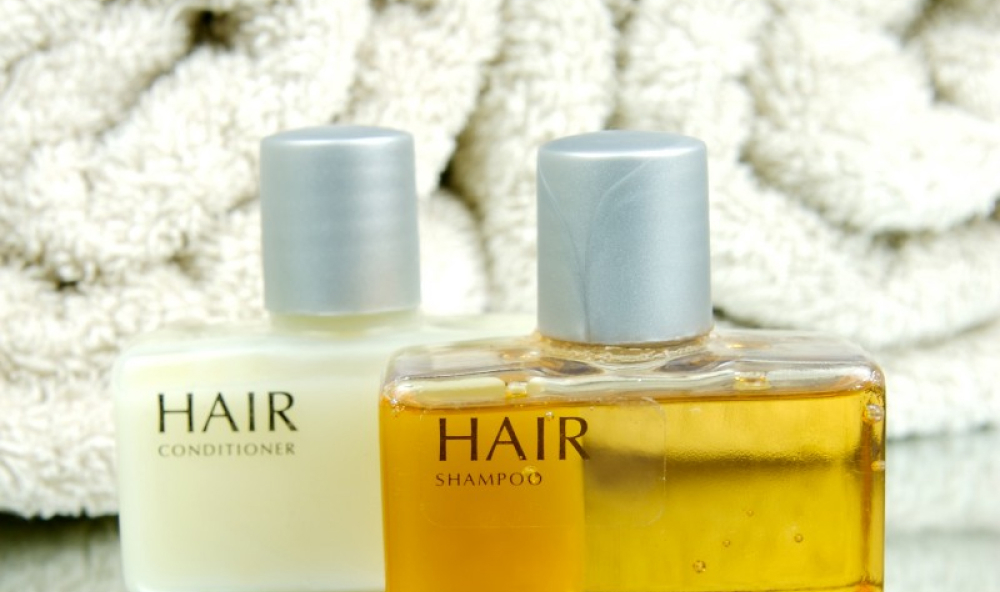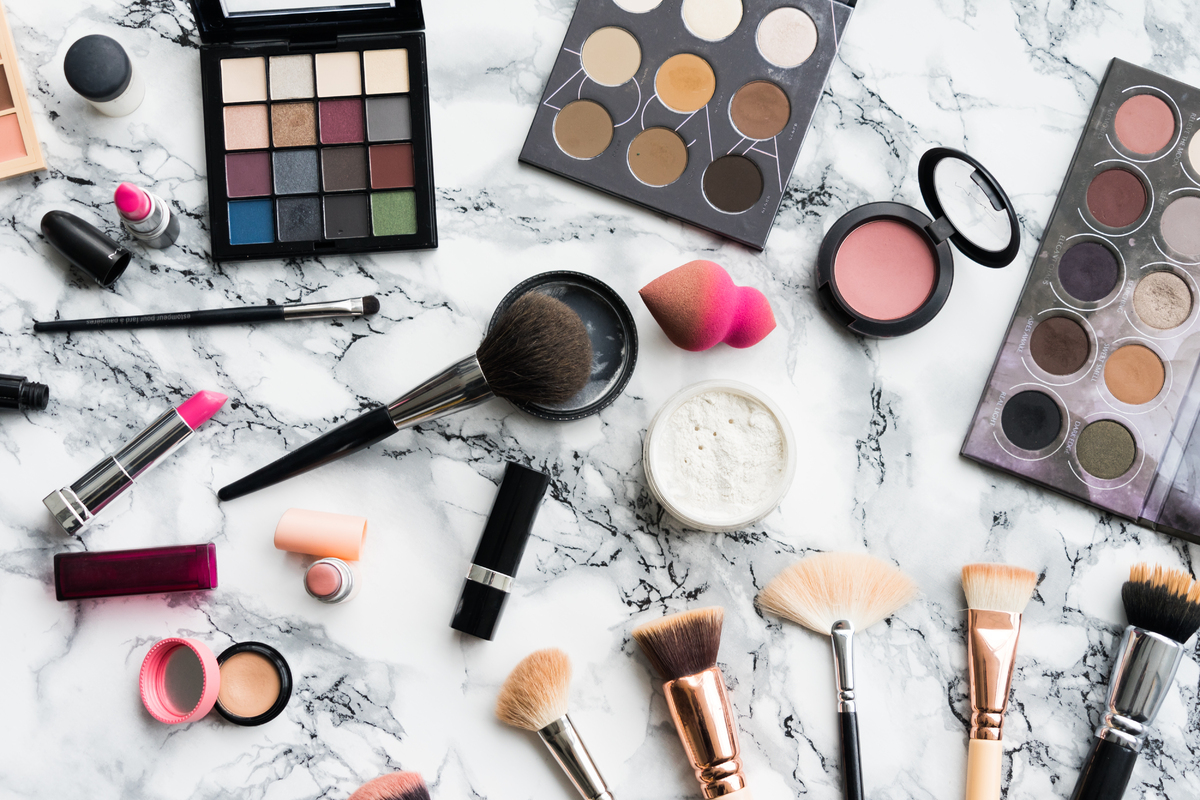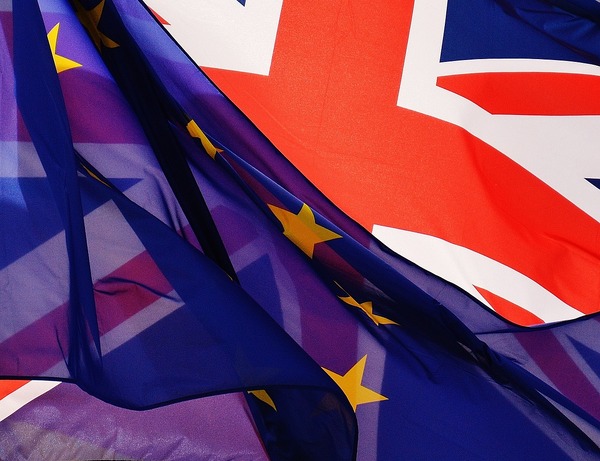You are viewing 1 of your 3 free articles for this month.
Get the knowledge: How to make better beauty product choices
Beauty may be skin deep, and the impacts of personal care and makeup products run far and wide. By considering the sourcing and safety of ingredients as well as packaging and waste, there is a lot we can do to make sure we buy products that are good for ourselves and the planet.

As a society, we’re constantly bombarded with advertisements for the latest beauty and personal care products. Whether it’s billboards for a ‘sustainable’ new mascara brand or a pop-up ad for an ‘eco-friendly’ antiperspirant, the slew of information designed to sell beauty products is relentless.
Positive marketing aside, many of these products also have less positive impacts on the world around us. Which begs the question: how do we filter through the mountain of product information to make the best purchasing decisions possible - for ourselves and the planet?
Many people think about animal rights and testing in relation to beauty and personal care products (PCPs) - but what about human rights? It’s a great place to start, because the beginning of many ingredient supply chains start with minerals, such as mica, which form an integral part of a lot of beauty products. With reflective properties, finely ground mica adds shimmer and sparkle to products ranging from shampoos to eyeshadows - yet, mica mining is beset by human rights issues, including child labour.
The mica issue
Mica is most commonly mined in the Jharkhand and Bihar regions in India, where children are regularly employed as labourers in mines (many of which are illegal). The mines are dangerous and unhealthy working environments for adults, let alone children.
Increased pressure on Indian authorities to grant more mining licences should legitimise illegal mines, meaning they will have to adhere to stricter safety standards.
Organisations like the Natural Resources Stewardship Council (NRSC) and Indian NGO Bachpan Bachao Andolan (BBA) have created “child-friendly villages”. Eradicating child slavery is the goal, by providing thousands of children access to education, sanitation and meals in the mining regions.
Currently, there is not an easy solution to the mica issue. Boycotting products would ultimately mean cutting off the main source of income for the mining communities. Many brands have increased transparency in their supply chains, allowing us as consumers to make more informed purchasing decisions.
Keeping an eye out for mica on ingredient lists is helpful, and ideally opting for brands that are openly addressing ethical concerns. Check out pack labels and brand websites for the Responsible Mica Initiative. This non-governmental organisation aims to build a sustainable mica supply chain in the absence of official third-party certifications for ethical mica sourcing.
An increasing number of products are also starting to contain synthetic mica alternatives. However, many companies are not keen to do this as they would not be able to label their products as ‘organic’ - and even the synthetic alternatives can still contain trace amounts of mica.

Thousands of ingredients
Mica is just one of many thousands of chemical ingredients used to make cosmetics and personal care products. Many beauty products contain multiple ingredients (just look at the labels, if they are required in your country).
These ingredients help the product perform - such as emollients that moisturise skin, surfactants that help wash away oil and dirt, or pigments that provide desired colours. They also make sure the product is stable throughout its life - such as emulsifiers that stop ingredients separating, or preservatives that prevent spoiling. However, the lists can be baffling and meaningless, unless you have the time and know-how to research each one.
The use of ingredients in cosmetics is regulated in many countries to ensure that they are safe for human use. Some countries also assess the impacts of ingredients on the environment (remembering that many personal care products are washed down the drain or end up in landfills).
Problems only come to light if those affected report the effects to market surveillance systems
However, there are several gaps in legislation. For example, many rules are based on ingredient and product safety assessments done by manufacturers themselves (although regulations specify how those assessments are done, as well as list substances not to be used, that are approved for use, or that have to be used under certain conditions). If there are problems with products - for example, they might cause skin rashes or eye irritation – they only come to light if those affected report the effects to market surveillance systems.
Certain ingredients (see table) have caused concern over the years, as have certain types of chemical – such as those that can affect hormones (known as endocrine disruptors or EDCs). Nanomaterials, which include many pigments used in cosmetics, can also impact health.
As nature intended
The beauty sector has also been at the forefront of switching to ‘natural’ ingredients, based on research showing that consumers prefer such products. While many natural ingredients have a long history of use in other applications - such as food and drink - that does not automatically mean they are safe for use in cosmetics. Work is going on to address gaps in knowledge.
The trend to natural ingredients has also driven increased use of palm oil in cosmetics. Increased demand for palm oil has led to significant deforestation in several countries, with negative impacts on biodiversity.
As well as making sure beauty products do not harm our health, it is also important to consider how ingredients impact the environment, as many products are either sprayed into the air, washed down the drain or end up in landfill. It has been estimated that around a third of all personal care products are thrown away before they are used. Pollution from manufacture and use also is a consideration.
Chemicals of concern used in beauty products
|
Packaging
A report by recycling company TerraCycle suggested the beauty industry produces around 120 billion units of packaging every year. Much of this is plastic that is not recycled.
Brands are starting to tackle the problem, and individually we can all take steps by making smart choices. We can purchase products that use non-plastic materials, or look for recycling symbols on packaging. Keep an eye out for the use of post-consumer recycled (PCR) materials in packaging (see link to symbols below).
The Body Shop announced it has purchased hundreds of tons of recycled plastic from India to use in its packaging.

Many shampoos and soaps are now also available in bar form. As well as being better from a resource and climate perspective, bars (and powders) reduce the need for plastic packaging.
Zero-waste stores that allow you to fill up your own containers are also a great way to avoid single-use packaging, and save you money. Research by the LCA Centre in the Netherlands suggests buying refills instead of brand new products to reduce carbon emissions by 70%, energy use by 65% and water by 45%.
Market leading brands, like Procter & Gamble and Unilever, are getting in on the action, taking part in trial programmes that allow consumers to use refillable containers for some products.
Fair tradeKeep your eyes peeled for the Fair Trade UK logo. With many shower gels, potions and lotions containing natural ingredients like shea butter and coconut oil, it’s important we buy products whose ingredients are obtained fairly. This logo ensures three things: growers receive a fair price for their crops, the items are ethically and sustainably sourced, and proceeds go back into helping the local community. It’s a positive for everyone involved and an easy label to spot. |
Footprints
Water is the number one raw material used in the beauty and personal care industries. As well as being used in manufacturing processes, water (aqua) is often at the top of product ingredient lists.
Some companies are starting to provide consumers with more information on product ‘water footprints’, to help us understand how much water is used to make the product and use it.
It also takes a huge amount of energy and chemicals to produce both the products and containers. An increasing number of brands are taking a carbon-neutral or carbon-negative approach to beauty and personal care products.
However, studies (such as those carried out for Cosmetics Europe) indicate that by far the most demanding part of the life cycle of personal hygiene cleansing products is during use – in terms of the water usage, and the energy needed to heat up water. By understanding these impacts, consumers can consider their behaviours – like showering more quickly (actress Cate Blanchett says she has four-minute showers to save water), or washing hair less often.
Greenwashing
Beauty brands regularly use words like ‘free-from’, ‘sustainable’, ‘natural’ and ‘environmentally friendly’ to describe products. But in many countries the use of these words is not regulated, and as such supermarket aisles can be confusing places. When companies can’t back up their claims, it is known as greenwashing. It is important to look beyond the hype and be satisfied that your purchases live up to the promises.
One way consumers can do this is to look for certification or verification of claims - either on the product itself, or by doing internet research. In Europe, cosmetics can apply for the EU’s ecolabel scheme.
Best steps (infographic)
Check it out
For more information on these issues:
- Terre des Hommes, a charity working to stop child slavery published a global report in 2019 on the impact of mica mining on children’s rights
- Responsible Mica Initiative 2021 annual report outlining the current situation, case studies and future strategies
- Cosmetics Europe on ways to reduce the environmental impact of shampooing in the shower. And Good Sustainability Practice guide.
- British Beauty Council Planet Positive Beauty Guide
- How the EU regulates cosmetics
- Cosmetics and biodiversity factsheet.
Get active with NGOs, charities and specialist information sites
- Bachpan Bachao Andolan works to liberate and rehabilitate vulnerable and exploited children and prosecute those responsible for such atrocities.
- Campaign for Safe Cosmetics publishes a list of chemicals on concern in cosmetics.
- Beat the Microbead Campaign one click campaign to press manufacturers to remove microplastics from your favourite products.
- Plastics Pollution Coalition information on overcoming cosmetics packaging.
- The Consumer Brands Association Guide to recycling labels (US)
- See Ethical Consumer’s health and beauty shopping guides.
Activate employees
Find out how OckiPro membership engages employees to deliver sustainability impact.
Get Involved
There are many ways to get involved with Ocki and its community. To find out more, click the button below



